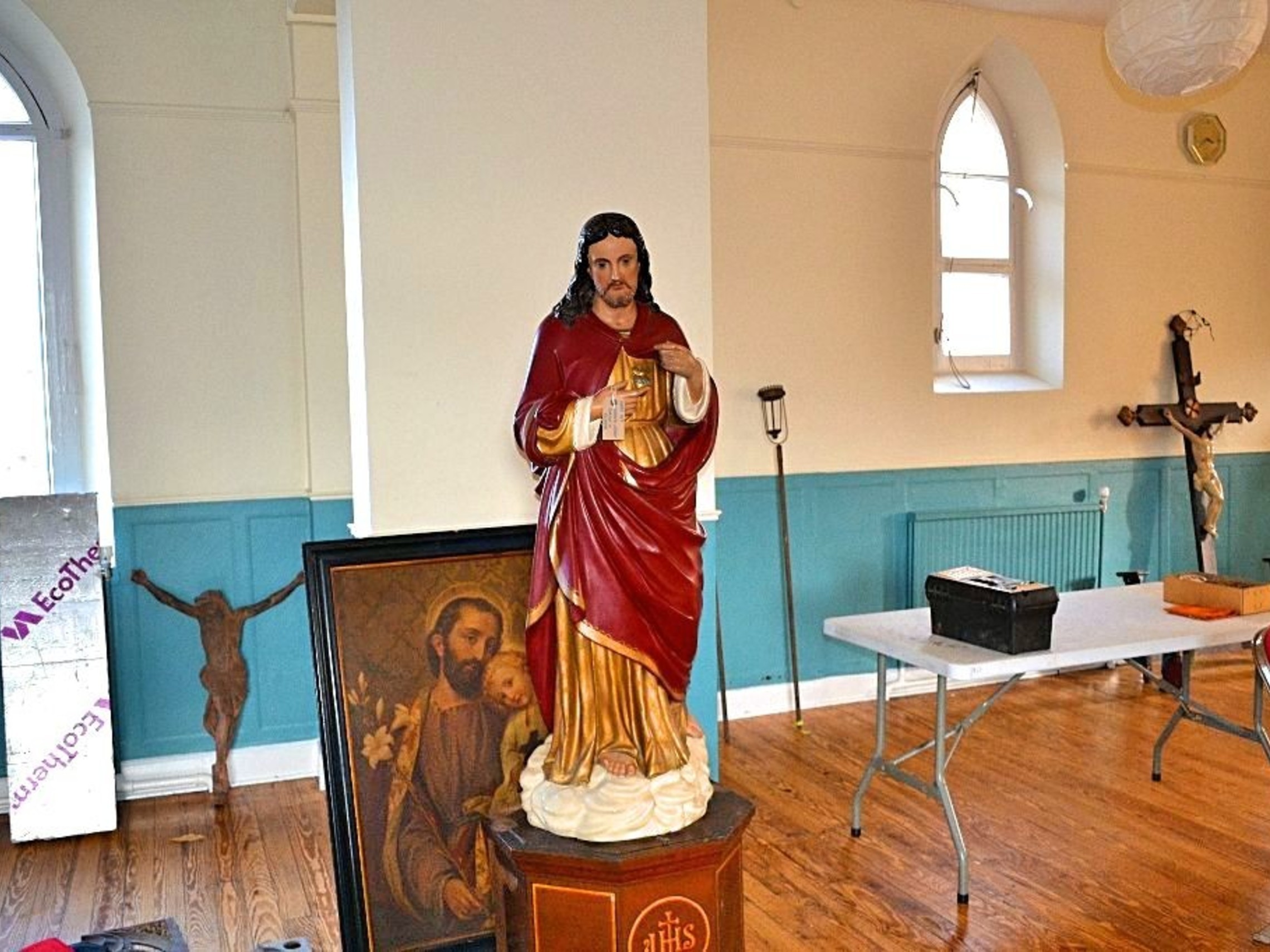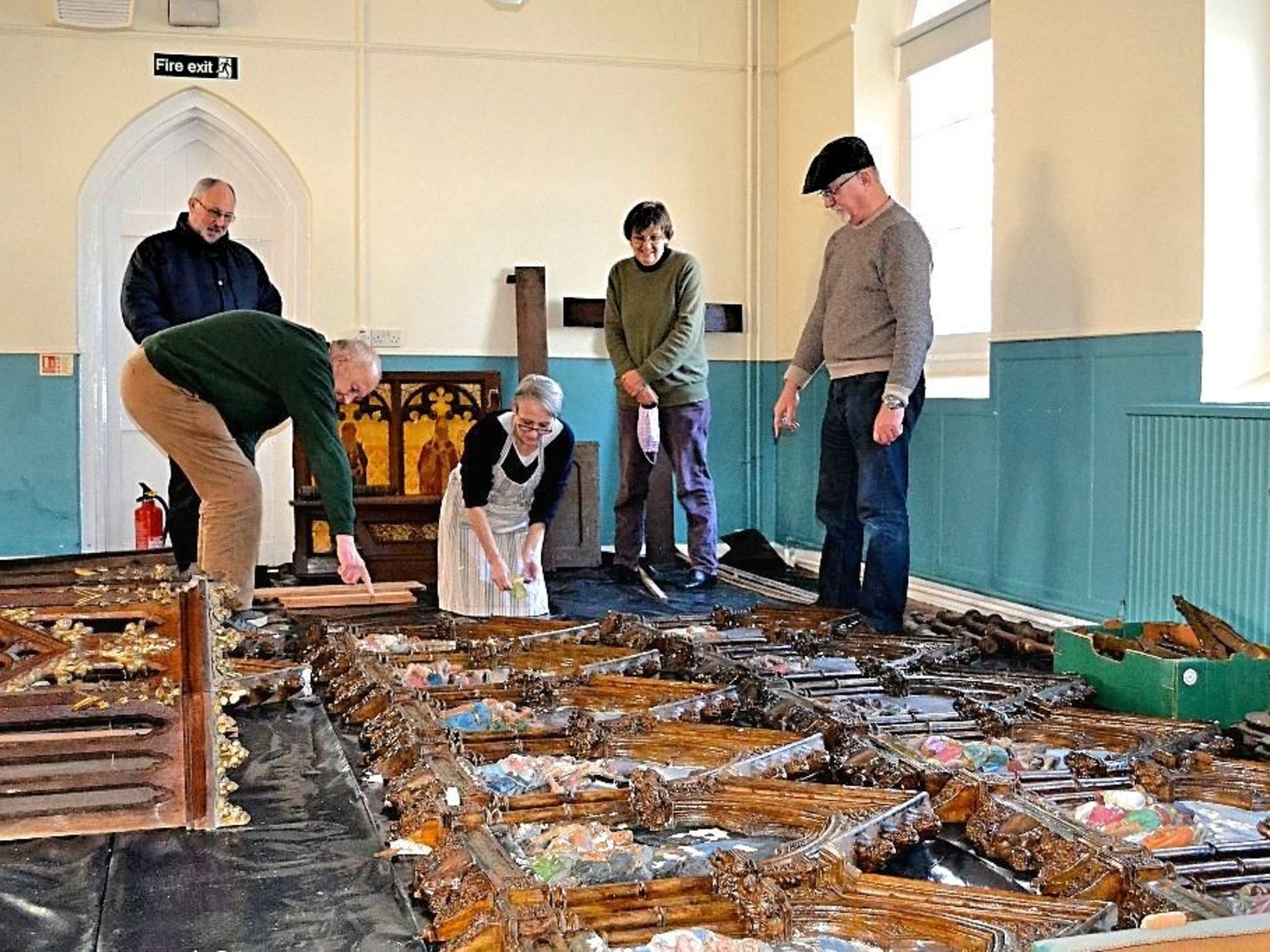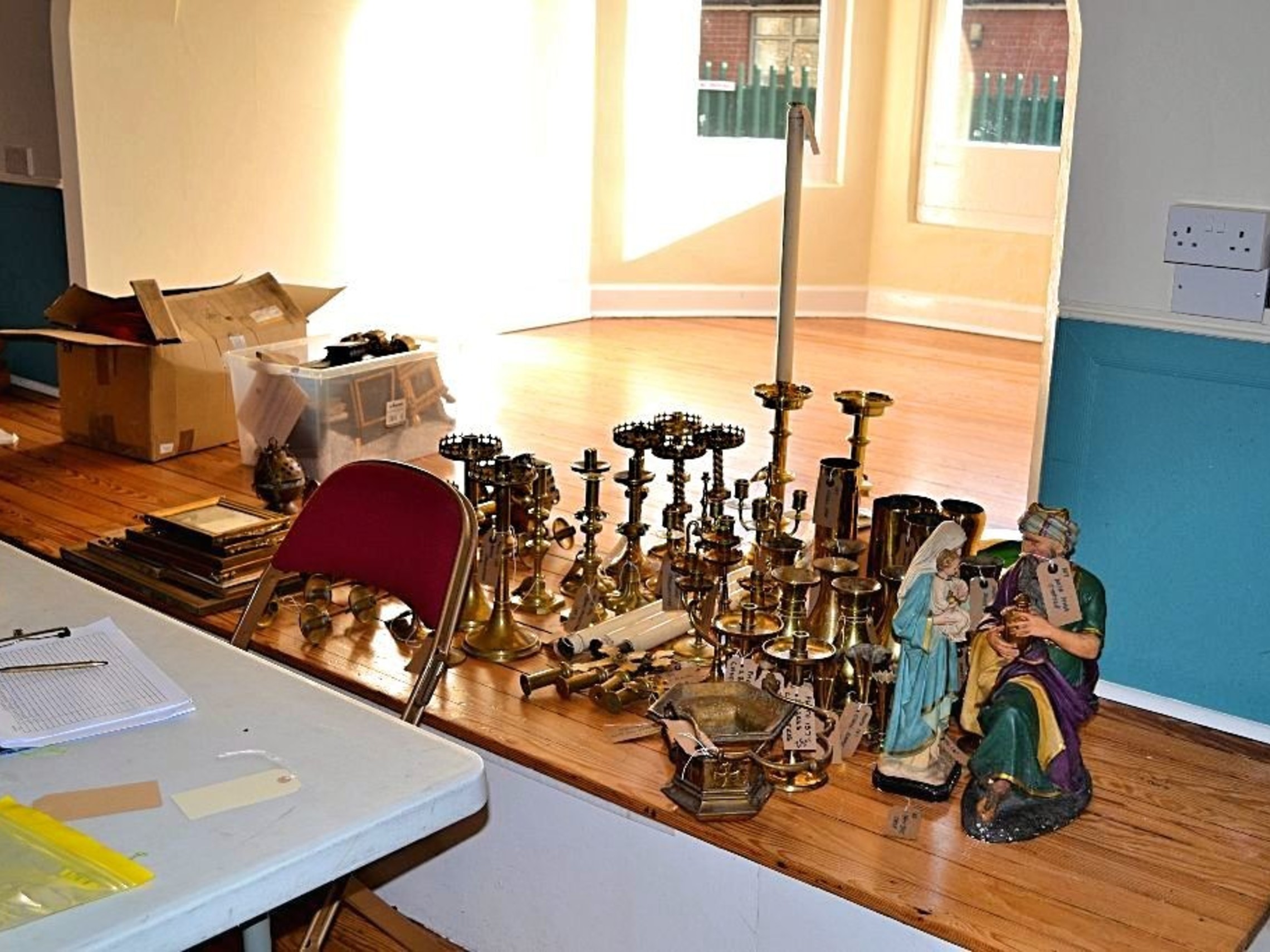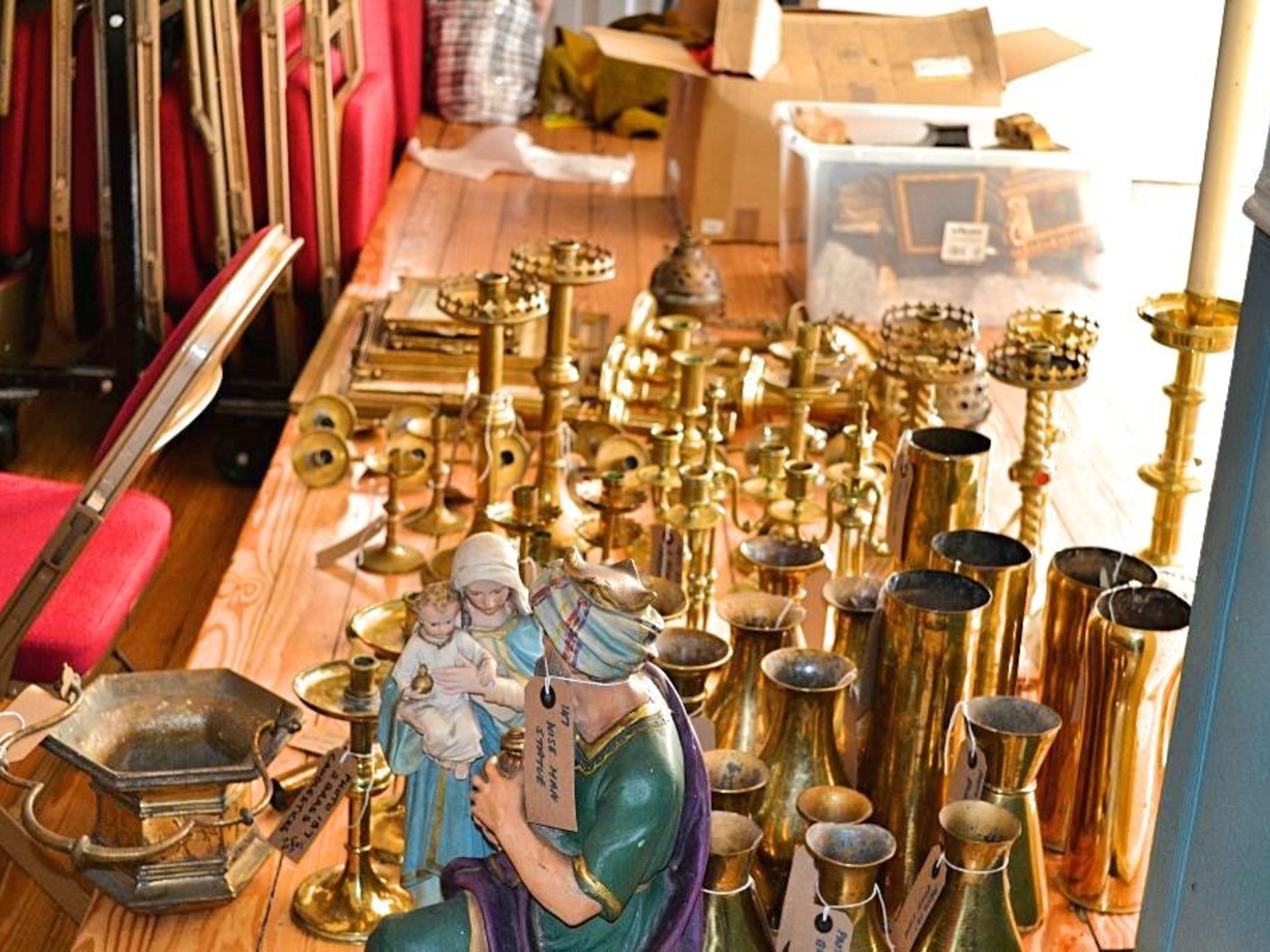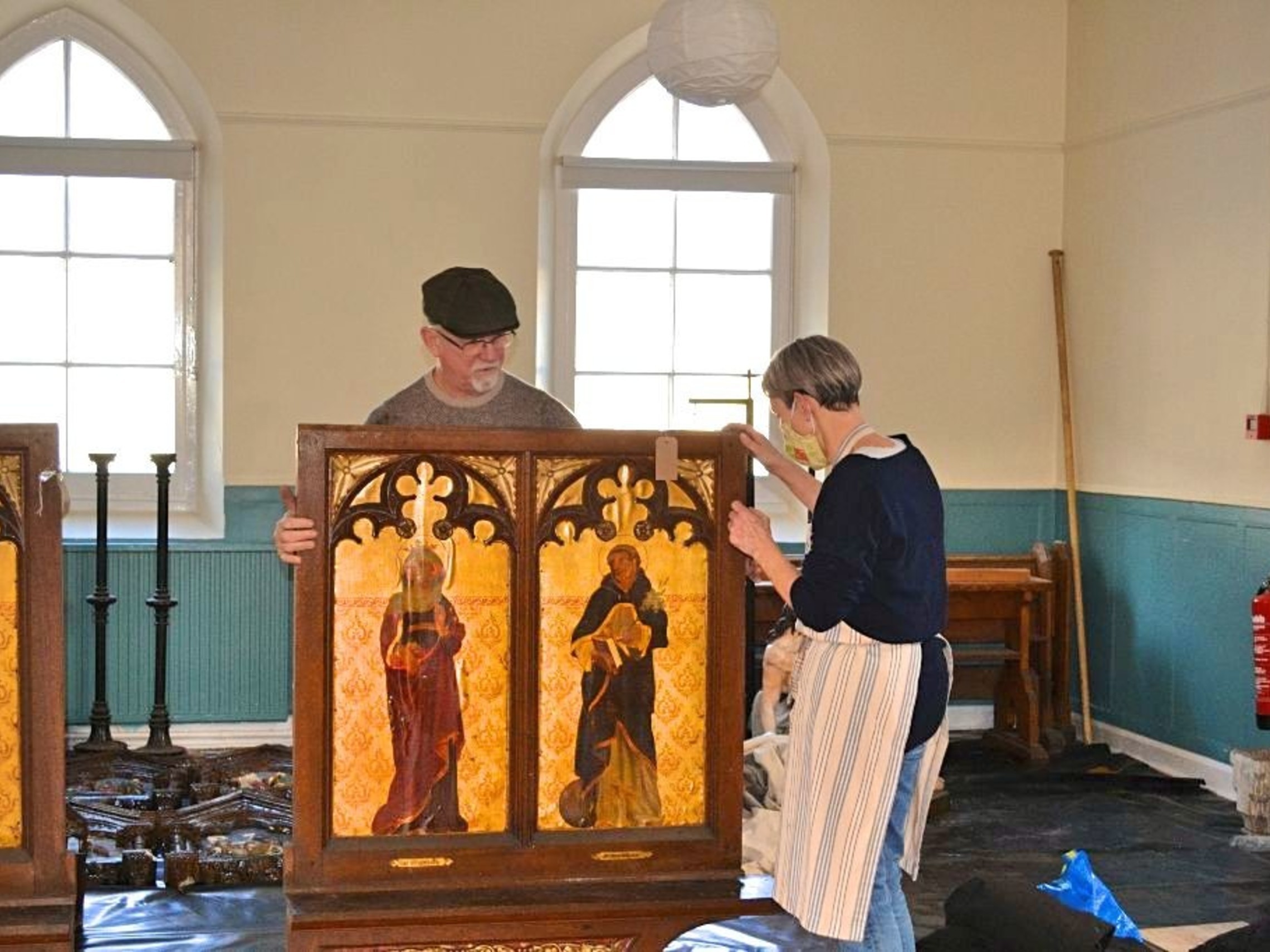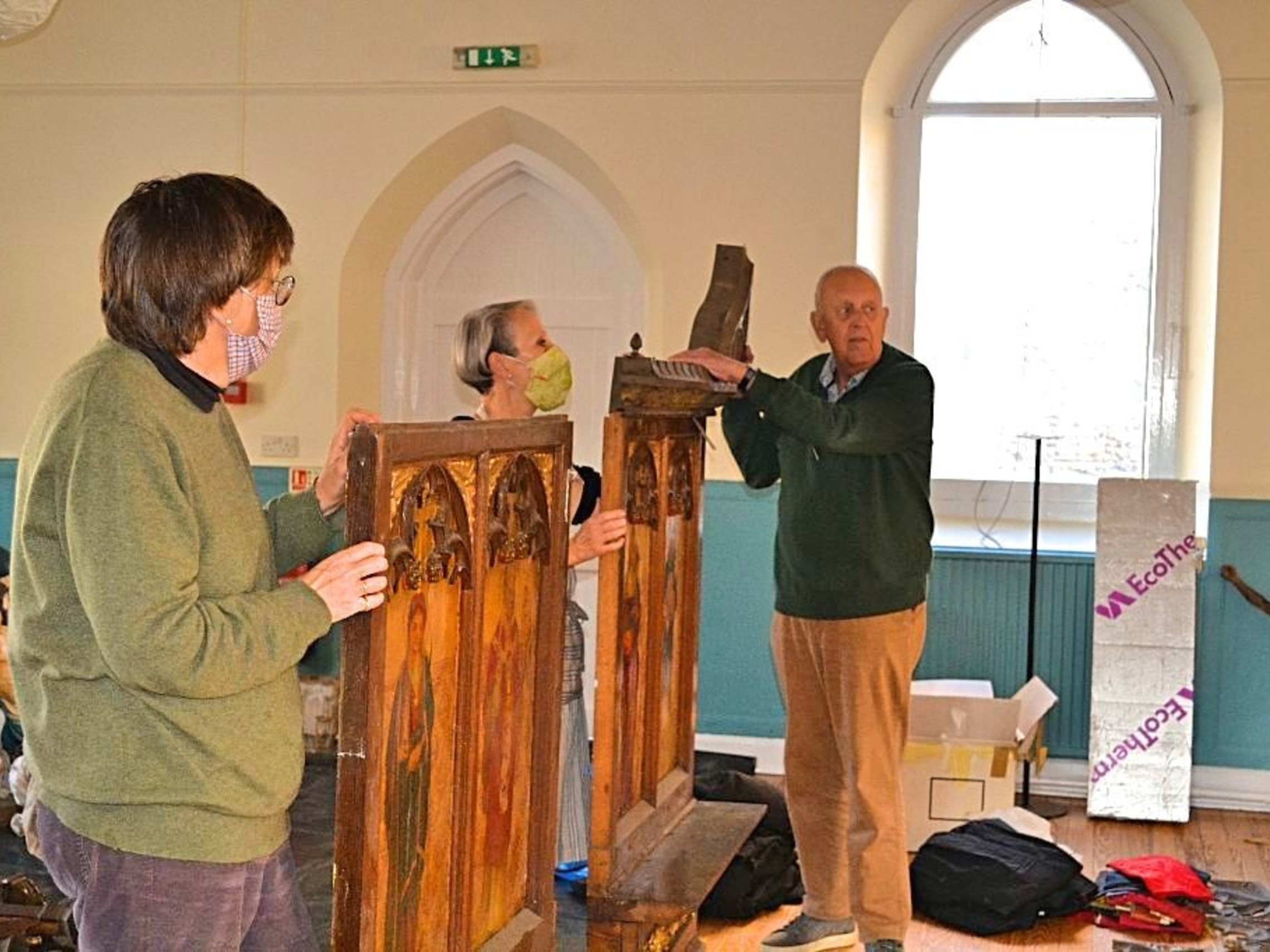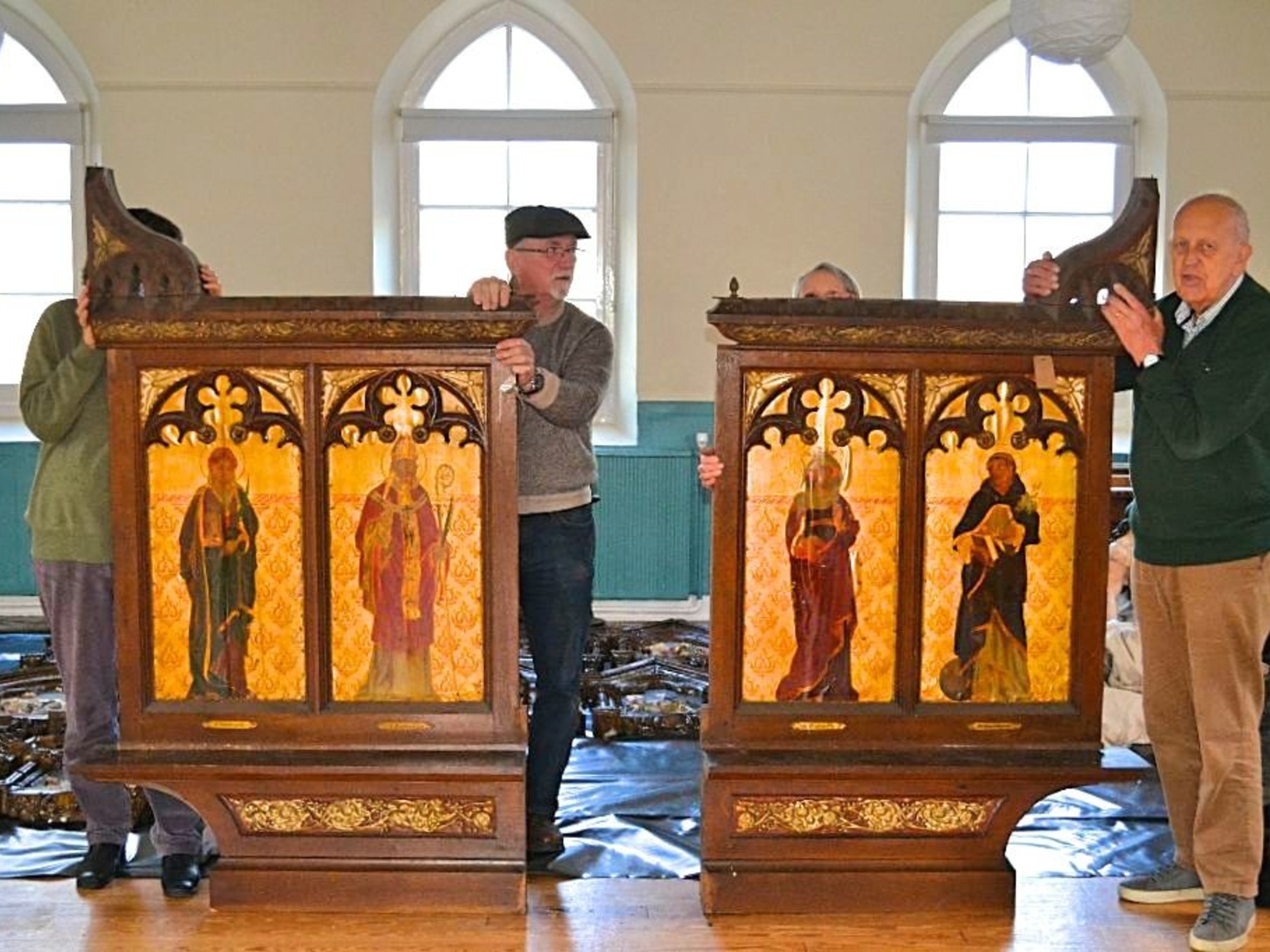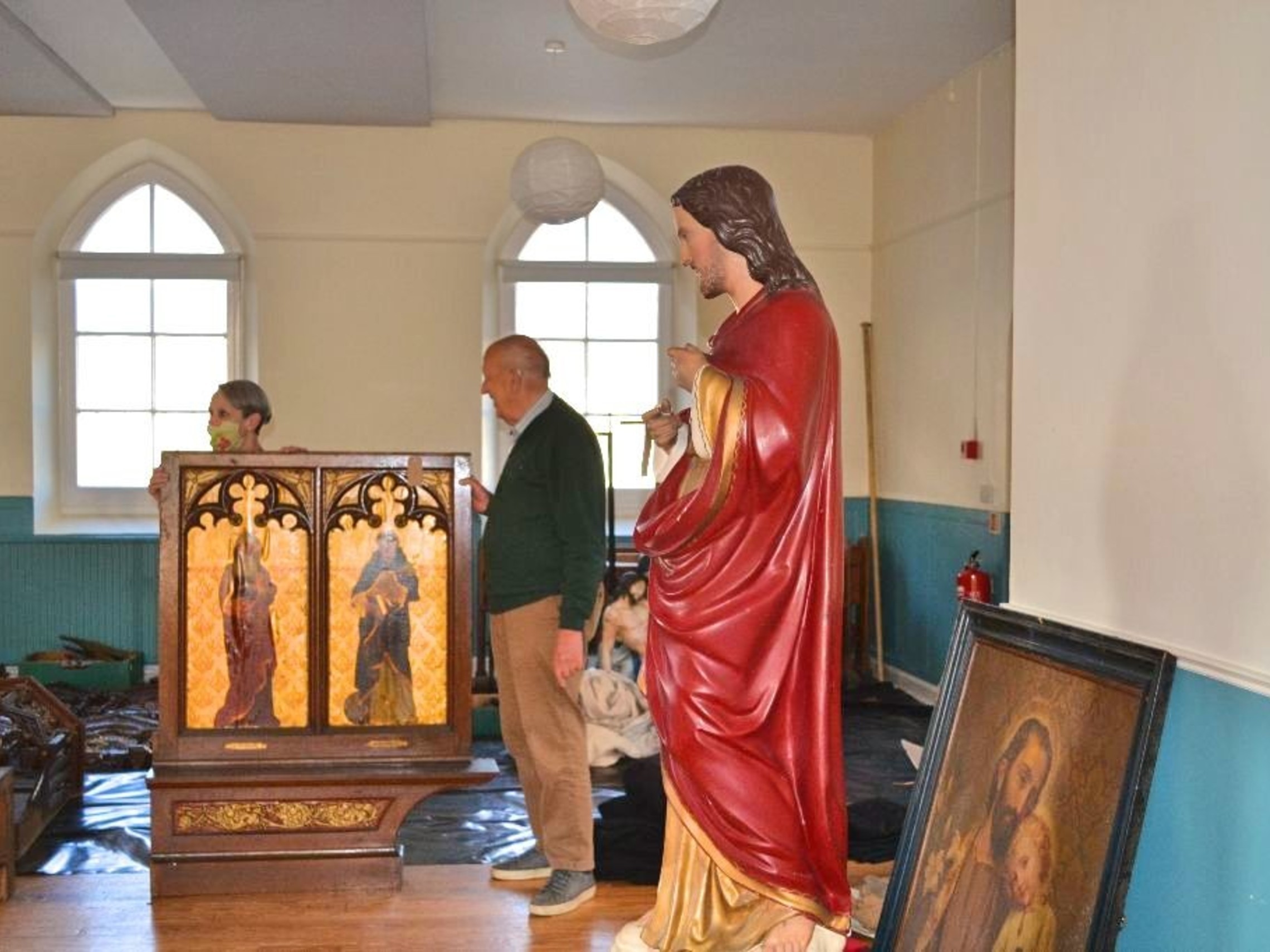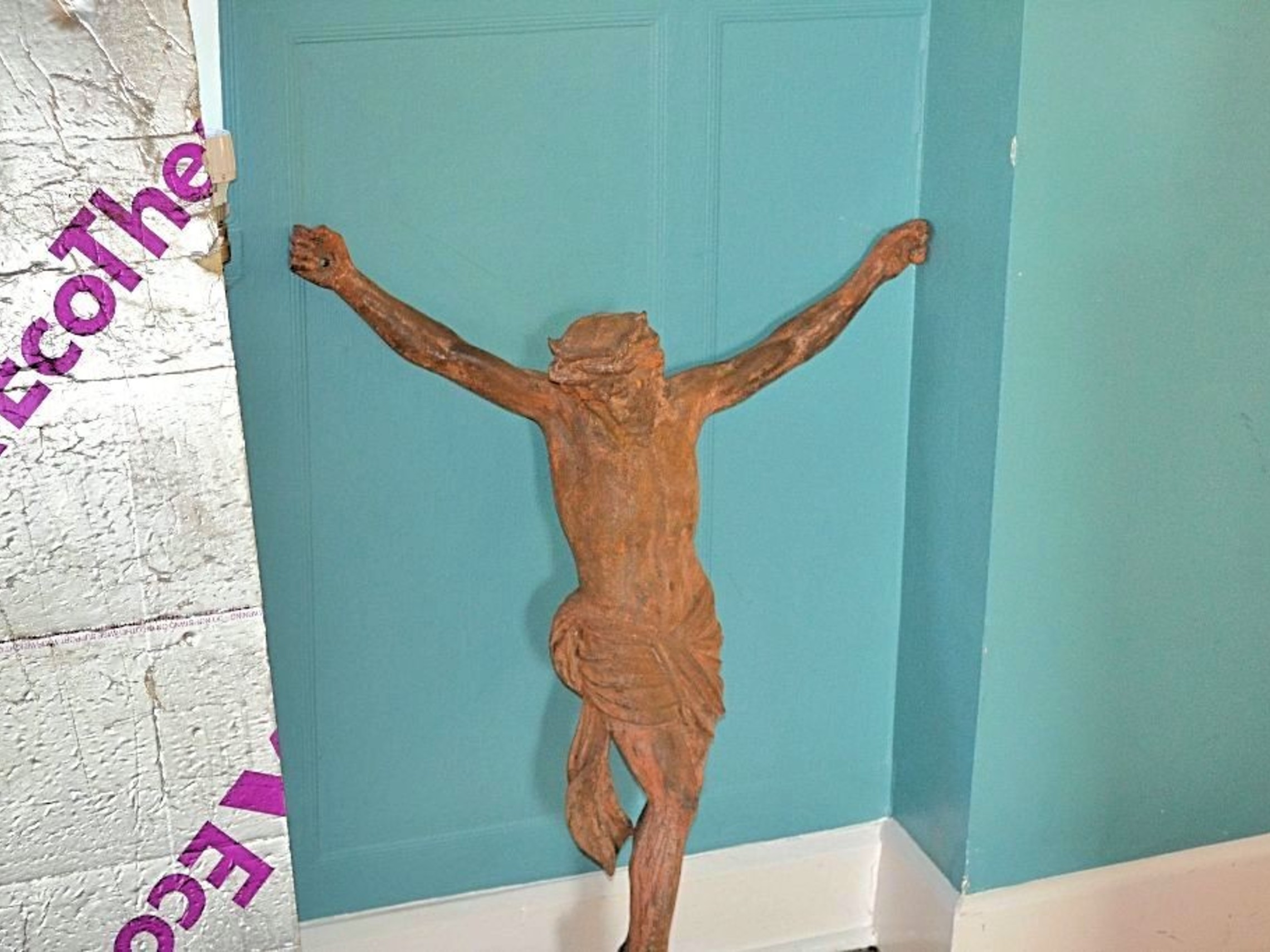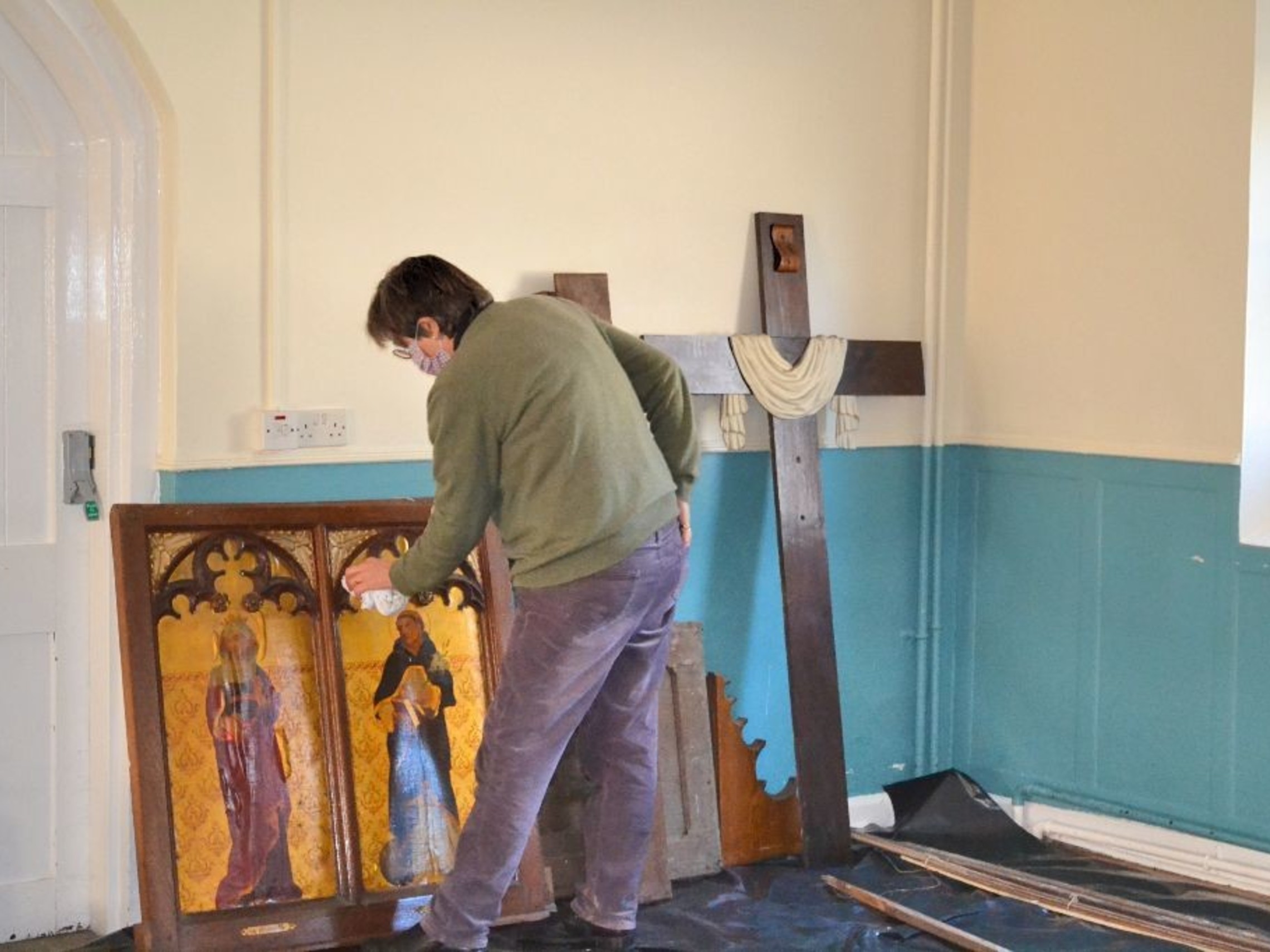Heritage
VOLUNTEERS WANTED
Volunteers needed! You may remember that last year, we removed a number of items from the bell tower in St Osmund’s. The details (and photographs) are still available to see below. Thanks to the hard work of our volunteer team prior to the latest lockdown, all the items have now been assessed, cleaned and catalogued. The smaller items will be returned and stored in St Osmund’s but there are some items that (due to their size) we cannot store at present on site (parts of the original Pugin Rood screen and an early set of Stations of the Cross). However, their historical significance means that we have a duty to preserve and store them. The parish of St John the Evangelist in Bath have come to our aid and agreed to store them for us. We are grateful to Mike Presley for providing use of a truck and to Kevin Lynn for agreeing to drive them there but we now need a team of volunteers to help us bubble wrap and clearly label all the items ready for transportation and storage. We hope to complete the task between Monday 26 April and Monday 10 May. If you have some spare time between those dates and would be willing to join in with this effort, we would love to hear from you! Please email: [email protected] or ring the office on 01722 562703.
St Osmund’s church in Salisbury was designed by Pugin and built in 1847-8. Pugin had lived on the outskirts of Salisbury. He purchased a building plot in 1834 and built St Marie’s Grange but the family moved to London in 1837 and he sold the house in 1841. It was while he was in Salisbury that Pugin converted to Catholicism.
Pugin was asked to produce drawings for a church in Salisbury in 1846 and building work started the year after. He only visited the site twice during its construction and was dissatisfied with it, most probably because it was not built by Myers who were his preferred builders, but by a Salisbury firm over whom he had less control. The church was consecrated on 6 September 1848.
There was a major restoration in 1893-4 when a north aisle was added and a major reordering took place sometime in the 1960s or early 70s when a nave altar was introduced in line with the edicts of Vatican II. As a result of all these, and other changes, little of the original building survives apart from the main structure. That was until a few weeks ago when the contents of an old collapsing shed at the end of the garden to the priest’s house was cleared along with things that had been stored in the tower. What was revealed is remarkable and some at least of the finds may well have been part of the church as it was initially built.
Everything in the old shed, in the belfry tower and in the loft above the sacristy (vestry) was moved to a nearby hall so that it could be sorted, cleaned to remove the years of accumulated dirt and catalogued. Some idea of the scale of the deposits can be gained from the fact that when they were laid out they occupied a floor space of about 30 ft x 20 ft.
Apart from a few select items that will be discussed shortly, there were numerous metal flower vases, dozens of candlesticks and a huge assortment of metal rods and pieces of carved Gothic timberwork. All of these needed to be cleaned and then catalogued.
There is a very indistinct photograph of the church as it existed prior to the major restoration of 1894, and while much of the detail is hard to see, the outline of a rood screen is visible. There is a mid 20th century photograph of the church interior as it was prior to the changes prompted by Vatican II. This shows the rood screen very clearly with a central crucifix, statues of Mary and St John, one on either side and four candlesticks. All this was mounted on a wooden rood screen. The crucifix, the statues of Mary and St John, plus various parts of the wooden screen, were quickly identified. While they are not in perfect condition they have survived remarkably well considering how they have been stored.
There has been much debate about this rood and screen and whether is was part of the original Pugin church or added at some time between 1847 and 1894. There is a letter Pugin wrote to John Hardman on 3 August 1848 in which he ordered various items of ironwork for the church and included in that order was the following (cited from Margaret Belcher, The Collected Letters of A.W.N.Pugin, vol 3, p 558):
I have been to salisbury and there are a lot of small things wanted.
1. there are 4 plain standards for Rood 1.2 high [Sketch: standard marked ‘1.2’, ‘pin’ and ‘1”’] I think these were ordered some time ago as they belong to Myers contract
This would seem to provide conclusive evidence of a rood being part of the original church and the order for 4 candlesticks to go with the rood matches those shown on the photograph and those found amongst the items that were recovered from the shed. These are spring loaded artificial candles which house a real candle inside that is progressively pushed up the “candle” as it burns.
The largest single set of items that have been recovered are a full set of 14 Stations of the Cross. Pugin did not install Stations of the Cross in his churches as this form of devotion was not introduced until around 1860. The stations were examined by Peter Martindale Conservation in 2009. The subject matter of the station is shown in high relief within a trefoil-framed arch. Both the figurative panel and the frame are cast in plaster; most probably separately, and then joined together. Paint analysis shows that they have been repainted, at least in part, at some time after 1960, because an acrylic paint has been used and this was not available until that date. The quality of the repainting is not good and now the paint has started to lift and fall off. The best estimated date of origin that we have been able to obtain so far is sometime after 1875. It is possible that they were an addition made to the church during the restoration of 1894.
It will take several months to determine exactly what has been recovered and to catalogue it, and then to face the even more daunting task of deciding what will happen to each piece.


